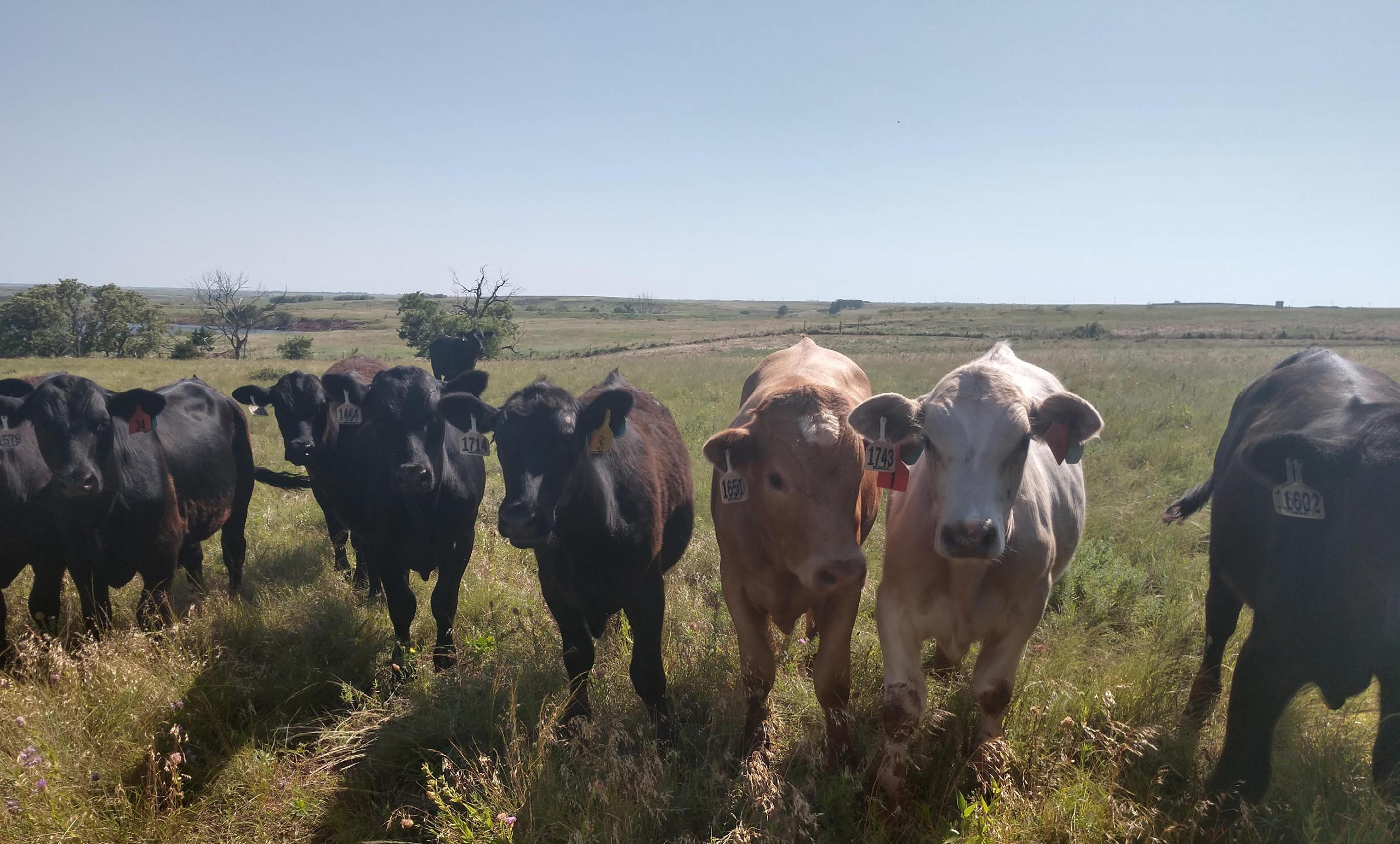
2 minute read
Increasing Stocking Rates and Enhancing Performance of Growing Steers
Zane Grigsby, animal science graduate student, and Paul Beck, OSU beef Extension specialist, recently finished the first year of an experiment using a novel distiller’s grains based range cube to increase stocking rates and enhance performance of growing steers grazing native prairie and bermudagrass in Oklahoma. The multi-year experiment is investigating the impacts of supplementation and increased stocking rates on performance of growing steers, economics of the stocker cattle enterprise, and range conditions.
“The enterprise services that the stocker-cattle segment supplies to the beef industry are well characterized,” said Beck. “These services include providing the market with immunocompetent weaned feeder cattle that have been acclimated to feed bunks and water sources and have been grouped in load lots.”
Advertisement
Another service is providing placement area for calf numbers that are in excess of feedyard capacity, which occurs when large numbers of calves are marketed simultaneously.
Stocking rate is the fundamental management factor under producer control that has a major impact on animal performance, economics, and long-term sustainability of native range-based ecosystems. As stocking rate increases, individual animal growth rate declines, yet total bodyweight gain per unit of land area increases up to a point where individual animal growth rate gets so low the total gain per unit of land area begins to decline.
“Producers are under significant economic pressures to maximize production per acre, which can prove harmful to the range condition where desired forage species are overgrazed decline in the stand,” said Beck. “Feeding high levels of supplemental feed based on corn co-products of the ethanol production industry can offset forage consumption by grazing cattle and lead to higher stocking rates, without the reductions in forage mass and animal performance.”
These feeds have been used as supplements to cattle grazing bermudagrass, wheat pasture, and old-world bluestem to increase stocking rate by 33 to 100%, while increasing animal performance and limiting impacts on forage growth and development.
Since similar research is limited in native grass-based systems in the arid regions of western Oklahoma, this project is being conducted in two locations in western Oklahoma; Klemme Research Range in Besse and USDA ARS-Southern Plains Range Research Station (SPRRS) in Ft. Supply.
At both ranges, steers were stocked at six acres/steer and supplemented with 2.5 pounds of dried distillers grains (DDGS) cubes/day during the late summer only. The research at the USDA range also included an increased stocking rate of four acres per growing calf along with supplemental DDGS cubes fed at a daily rate of 0.75% of bodyweight throughout the grazing season.
In the initial year of the experiment, late season supplementation increased gains at SPRRS from July to late September from 1.2 pounds per day in negative control steers to 1.9 pounds per day for Oklahoma Super Gold steers. The supplementation program increased net return per steer by $30/head. In both locations, increasing stocking rates and feeding the High Supplement treatment increased season long average daily gains and doubled total gains per acre and net return per acre.
This research will be repeated over several years to determine the impacts on economics and range conditions at these sites over time.
STORY BY REBEKAH ALFORD






